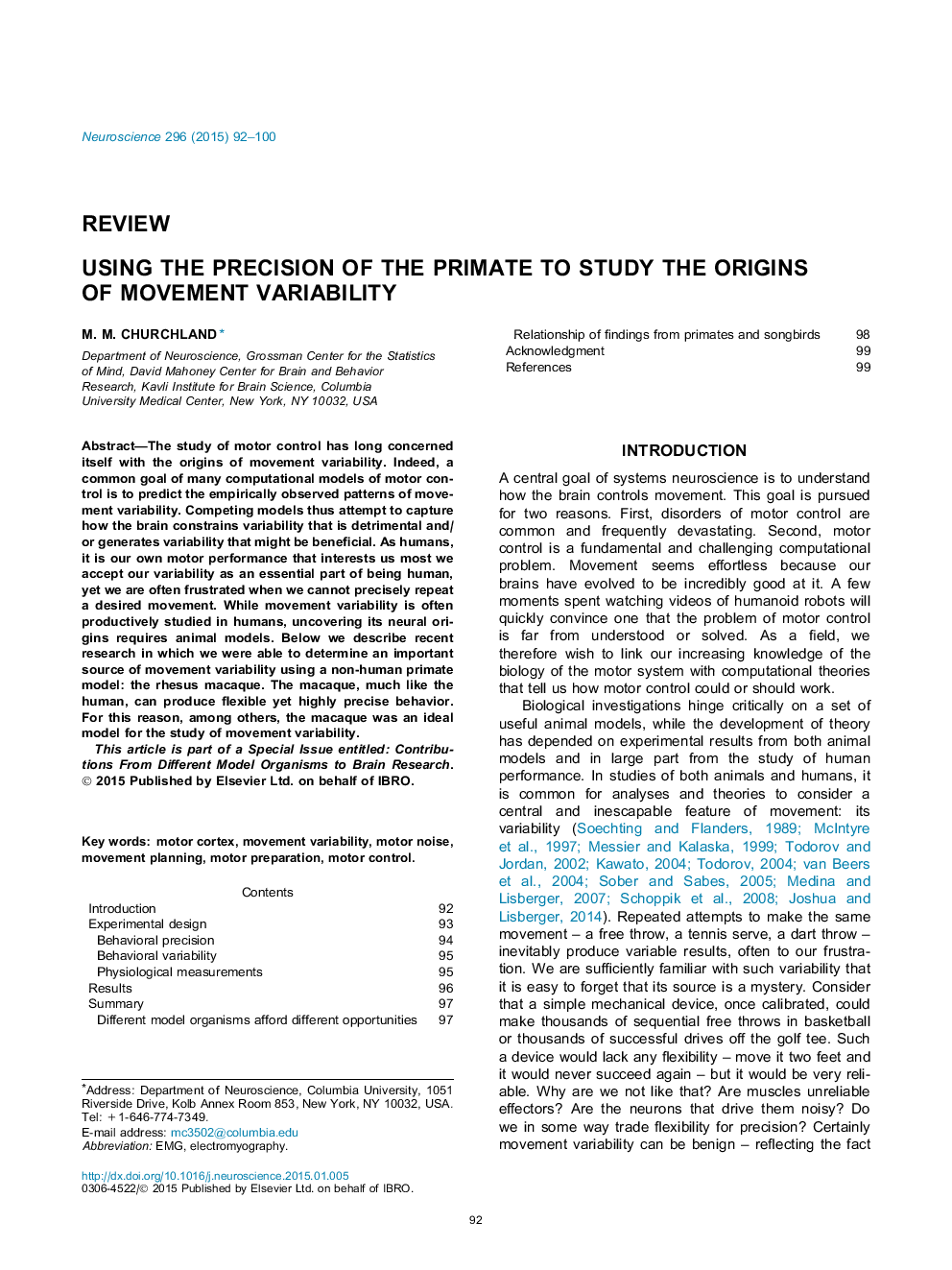| کد مقاله | کد نشریه | سال انتشار | مقاله انگلیسی | نسخه تمام متن |
|---|---|---|---|---|
| 6272615 | 1614780 | 2015 | 9 صفحه PDF | دانلود رایگان |

- Our understanding of motor control and movement variability are intertwined.
- The rhesus macaque is an ideal animal model for studying neural variability.
- Like the human, the macaque is capable of highly precise, repeatable behavior.
- Like the human, the macaque exhibits behavioral variability that limits performance.
- Preparatory neural activity is a major source of behavioral variability.
The study of motor control has long concerned itself with the origins of movement variability. Indeed, a common goal of many computational models of motor control is to predict the empirically observed patterns of movement variability. Competing models thus attempt to capture how the brain constrains variability that is detrimental and/or generates variability that might be beneficial. As humans, it is our own motor performance that interests us most we accept our variability as an essential part of being human, yet we are often frustrated when we cannot precisely repeat a desired movement. While movement variability is often productively studied in humans, uncovering its neural origins requires animal models. Below we describe recent research in which we were able to determine an important source of movement variability using a non-human primate model: the rhesus macaque. The macaque, much like the human, can produce flexible yet highly precise behavior. For this reason, among others, the macaque was an ideal model for the study of movement variability.
Journal: Neuroscience - Volume 296, 18 June 2015, Pages 92-100